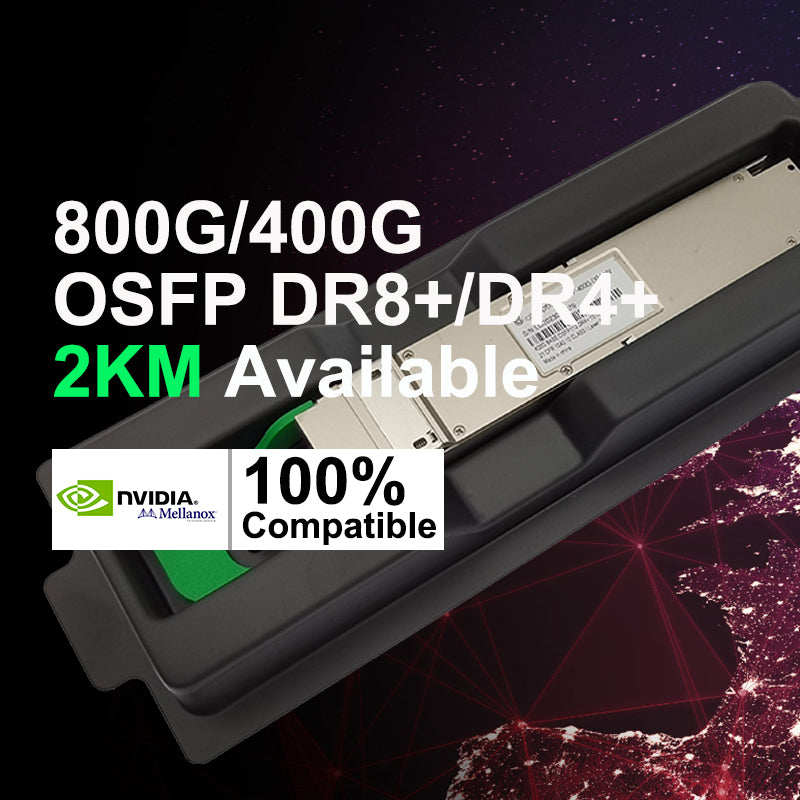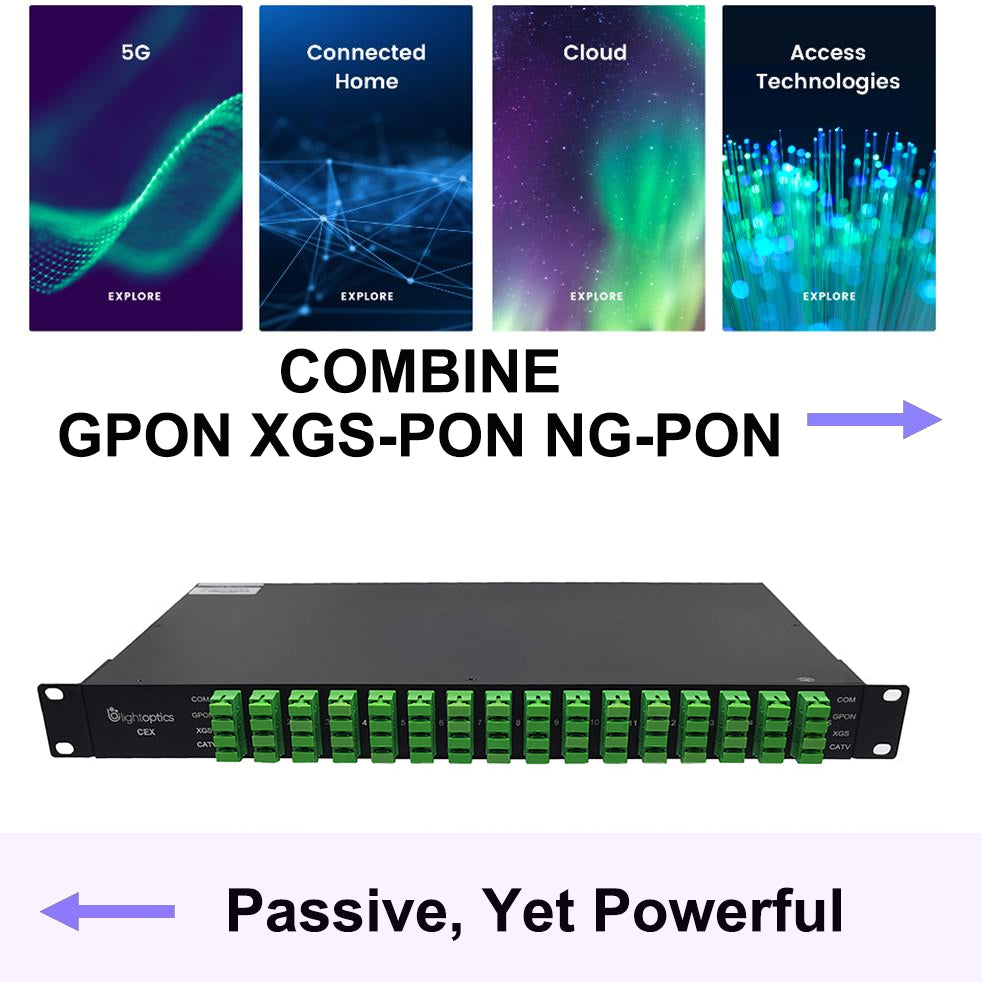Overview of GPON Fiber Network Architecture
Passive optical networks (PON) technology was available in the middle of 90s, is the highest speed, longest life, lowest cost network infrastructure available in the market, offering a genuine future‐proof access network with flexibility and upgrade capability well into the future. Since the huge development of network, various standards have been established and matured. PON developed from the first ATM PON (APON) and then evolved in Broadband PON (BPON) which is compatible with APON. Later, arisen Ethernet PON (EPON) and Gigabit PON (GPON) bring great improvement in data transmission distance and bandwidth. This tutorial will introduce about GPON Fiber Network Architecture.
GPON Technology
GPON is a point-to-multipoint access network. Its main characteristic is the use of passive splitters in the fiber distribution network, enabling one single feeding fiber from the provider to serve multiple homes and small businesses. GPON technology can be considered a next-generation PON standard. GPON stands for Gigabit Passive Optical Networks. A GPON network includes shared network equipment in the central office (OLT) and a dedicated optical unit at each subscriber location (ONU/ONT). In the middle it’s all fiber.
GPON allows you to consolidate multiple services onto a single fiber transport network. This is the key reason why some people opt for GPON over other technologies.

GPON Components
GPON is defined by ITU-T recommendation series G.984. GPON represents an increase in bandwidth compared with APON and BPON. GPON can be applied in many areas. In fiber to the desktop (FTTD) application, GPON is distributed via single-mode, simplex optical fiber connectors, and passive optical splitter typically using angled polish connectors (APC) to provide precision terminations.
There are 4 main components in this GPON system: the optical line terminal (OLT), the transmitting media (cabling and components), the fiber optical splitter, and the optical network terminal (ONT).
- OLT: OLT is the device that serves as your ISPs endpoint of the passive optical network (PON). The OLT also provides the interface between a PON and your ISP’s core network. Simply put, an OLT is ISP equipment.
- Transmitting Media: It is a communication channel that carries the information from the sender to the receiver. Data is transmitted through the electromagnetic signals. The main functionality of the transmission media is to carry the information in the form of bits through LAN(Local Area Network).
- Fiber Optic Splitter: also known as a beam splitter, is based on a quartz substrate of an integrated waveguide optical power distribution device, similar to a coaxial cable transmission system. The optical network system uses an optical signal coupled to the branch distribution. The fiber optic splitter is one of the most important passive devices in the optical fiber link. It is an optical fiber tandem device with many input and output terminals, especially applicable to a passive optical network (EPON, GPON, BPON, FTTX, FTTH etc.) to connect the main distribution frame and the terminal equipment and to branch the optical signal.
- ONT: ONT, also called the modem, connects to the termination point (TP) with an optical fiber cable, and connects to your router via an LAN / Ethernet cable. It converts the optical signals to electrical signals to deliver to the end device. ONT always has multiple Ethernet ports for connection to IP services such as CPUs, phones, wireless access points, and other video components. ONU and ONT are often used interchangeably. More or less, they are the same.

GPON Top Features
- Considerable reduction of costs for the operator because it allows sending many services at the same time though the same fiber connection. Thanks to the multiplexing we can simultaneously send:
- Voice (VoIP phone)
- The operation and maintenance for the operators are also simpler because GPON has remote management of the user’s equipment (ONT), download updates, operating parameters, and more.
- Data (Internet)
- TV and video (Multicast). We can send digital television in high definition (IPTV), video on demand (VOD), analog broadcast by RF.
- Allows fiber connections up to 20 km between the OLT and the ONT. This is a great advantage because the old xDSL connections only reach a maximum of 5.5 km at a lower cone connection speed. This is the reason why users who live far from the switchboard used to suffer an interruption in connection with the speed contracted with their Internet provider.
- It doesn’t need active intermediate equipment between the OLT and the ONT. It simplifies the deployment of fiber and allows much more straightforward and cheaper network typologies. Remember that splitters are passive elements.
Conclusion
GPON provides for a large range of benefits that enable fast, flexible, mass‐market fiber deployments at the lowest possible cost of ownership and rollout. However, GPON is the most complex of all PONs. But it’s the best one of all PONs. GPON has the benefits of saving costs for moves and adds or other changes, low price per port on passive components, easy installation and low installation costs. So GPON gains the popularity in today’s diverse and ever-changing technology applications.












